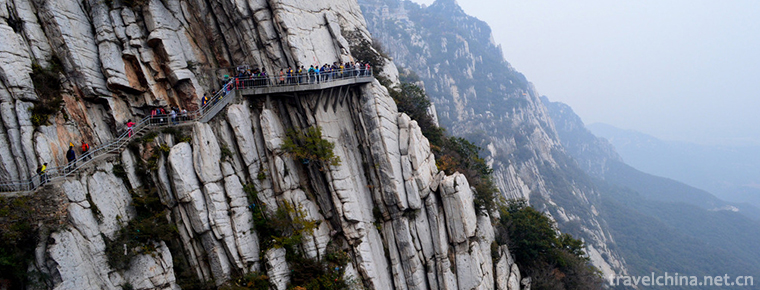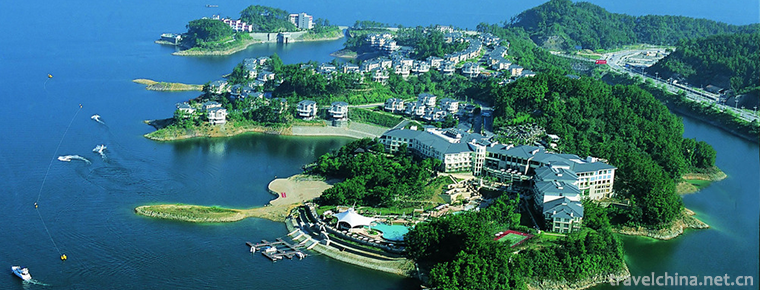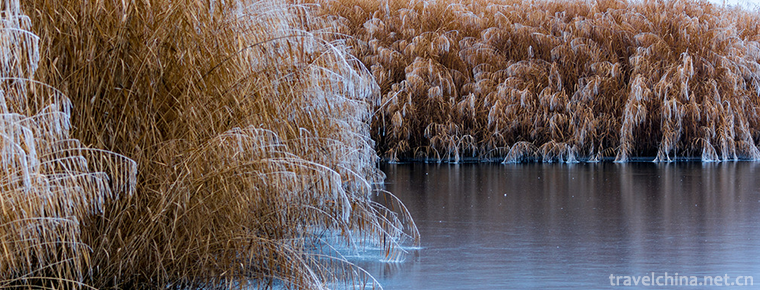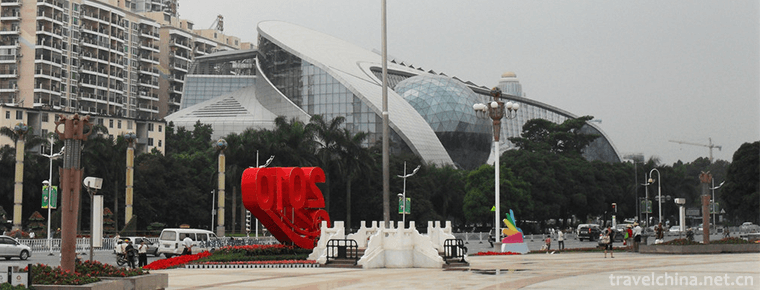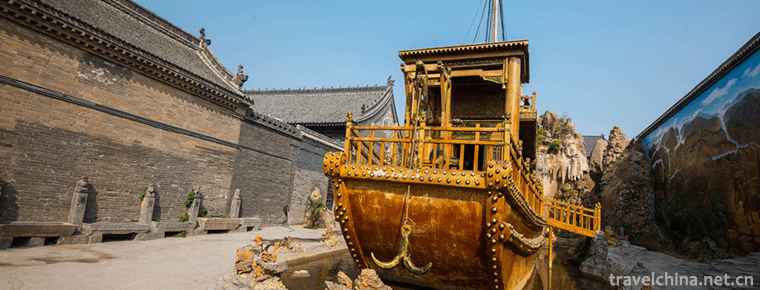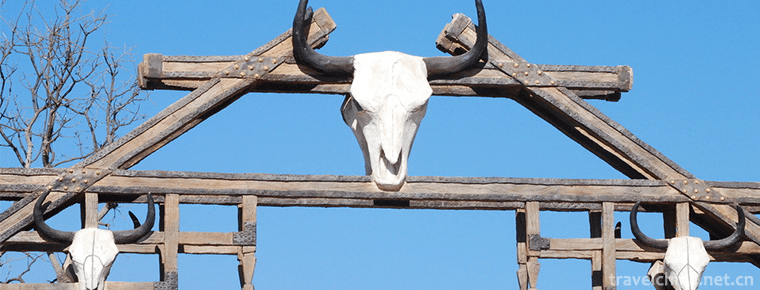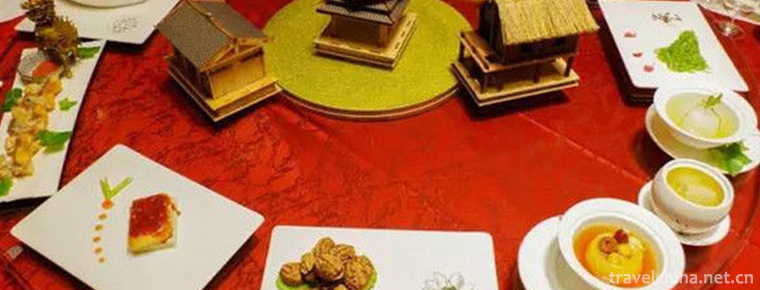Seoul Lake Park
Seoul Lake Park
Seoul Lake Park is located in Weiyang District of Xi'an City, Shaanxi Province. It is 200 meters west of the cross of Fengcheng 4th Road and Zhuhong Road. It was originally the Unity Reservoir (Gucao Transport Open Channel). Its water surface is 80 meters wide, 30 meters narrowest, and its water depth is 4 to 6 meters. The lake surface is 850 mu. It is a special ecological park integrating flood control and security, garden landscape, water area ecology, cultural relics protection and urban agricultural irrigation.
Starting from May 1, 2011, the scenic area will be open from north to Fengchan World, along Bacheng Yicai, Hanqiao Shui Town, Jiaolou Yicui, south to Chongwei Bridge, and Anmen Shengshi Square at the entrance. On both sides of the lake with a length of 3 kilometers, we will visit 42 hydro-cultural and Han-cultural thematic landscapes, such as Fengchan World Square, land carvings of Dahan Xinjiang, bronze statues of Emperor Wu of Han Dynasty, Seoul Lake Exhibition Hall, music fountain, water wheel mill, landscape bridge, Tianhan Xiongfeng relief sculpture, Shenmingtai, main entrance square of Anmen and water entrance.
On December 1, 2010, Seoul Lake Scenic Area was approved as a national water resources scenic area. In December 2012, Seoul Lake was named provincial soil and water conservation demonstration park by Shaanxi Soil and Water Conservation Bureau. In 2013, it passed the technical appraisal of the National Soil and Water Conservation Science and Technology Demonstration Park of the Ministry of Water Resources . In April 2013, Seoul Lake was awarded National AAAA Tourist Scenic Spot.
Historical evolution
Located in the northwest of Xi'an City, Shaanxi Province, Seoul Lake, formerly known as Tuanjie Reservoir (open channel of ancient canal transport), consists of four reservoirs: Xiku, Zhongku, Dongku and Tuanjie Reservoir. According to historical records, it was the Cao Canal Road of Chang'an City in the Han Dynasty. From the west, it is now Cheliu Village, the third bridge in Xi'an, and from the north to Guojiacun, responsible for the transportation of goods in the capital at that time
Seoul Lake Park is based on 36 square kilometers of Han Chang'an City ruins, 850 mu of clear water, 1031 mu of garden landscape as business cards, forming a new tourism pattern of "one heart, three lines and seven districts". One heart: the core is the site of Chang'an City in Han Dynasty; the third line is water line, battery car line and pedestrian line; the seventh area is seven landscape frameworks with the theme of Han culture exhibition, including Fengchan world, Bacheng overflowing color, Hanqiao water town, corner building emerald, imperial scenery overflowing, Liuguangpeiwan and Shengshi in Anmen. The planned land area is 2890 mu.
In December 1951, Xi'an Municipal Construction Bureau constructed a sewage sedimentation tank with a storage capacity of 350,000 cubic meters in Dabai Poplar, Li Shang Moat and Li Xia Moat, using the ruins of the Han Chang'an City Moat. By 1971, the storage capacity had reached 2 million cubic meters. The original design of the reservoir is mainly to regulate, store, sedimentate and oxidize the urban sewage. It undertakes the tasks of urban sewage discharge and rainwater discharge in Xingqing Lake, moat, old urban area and some parts of Northwest suburbs. The downstream of the reservoir is discharged into Weihe River through the open canal of canal transportation. It is an important part of the urban flood discharge system in Xi'an. As the groundwater level began to decline, the Fenghui Channel no longer drained to the reservoir area. In summer of 1999, the Xiku dried up.
In January 2006, the Xi'an Municipal Government launched the Tuanjie Reservoir Comprehensive Environmental Management Project. All the original sewage was diverted from Fenghe River to form a landscape water surface on Tuanjie Reservoir through a hidden culvert into the Caoyuan Open Channel and finally into the Weihe River.
In February 2008, Tuanjie Reservoir Water Environment Comprehensive Control Project was officially launched.
On September 18, 2009, a trial impoundment was conducted. The clear water of the Fenghe River, 40 kilometers away, was diverted from the Fenghe Third Main Channel to the Western Reservoir of the Unity Reservoir. After 6.27 kilometers of water, it was re-injected into the Weihe River to form 850 mu of water surface landscape, which reproduced the clear water surface when it was built 50 years ago. The Fenghe River continuously injects fresh water into the Unity Reservoir, with an annual total of 35 million cubic meters of water diverted.
On October 16, 2009, Xi'an Water Bureau issued a public announcement that Tuanjie Reservoir was renamed Seoul Lake. Tuanjie Reservoir is close to Chang'an City of Han Dynasty. In order to further highlight the unique characteristics of Xi'an's Han culture and highlight the rich historical features of the ancient capital, some elements of Han culture will be reflected in the renovated reservoir facilities.
In December 2009, Seoul Lake was awarded provincial water resources scenic spot.
In late July 2010, the Seoul Lake Water Environment Comprehensive Management and Promotion Project started in an all-round way.
On December 1, 2010, Seoul Lake Scenic Area was approved as a national water resources scenic area.
On October 1, 2011, Seoul Lake National Water Resources Scenic Area was officially opened to the outside world.
geographical environment
Location context
Located in Weiyang District of Xi'an City, Shaanxi Province, Seoul Lake Park, based on the site of Chang'an City, stretches west and north along the south-eastern corner of Chang'an City, covering 6.27 kilometers from Daxing Road Interchange to Zhuhong Road (Fengcheng Road 3). The right bank is close to the North Second Ring Road and Zhuhong Road, and the left bank is close to the site of Chang'an City in Han Dynasty.
climate
Weiyang District has a mild and humid climate with distinct seasons. It has a warm temperate semi-humid monsoon climate with an average annual temperature of 13.3 C. In spring, there are often cold waves, frost, wind speed is high, floating dust and spring drought; in summer, there are many rains and droughts in midsummer; in early autumn, there are many rains and clouds, and the temperature drops quickly; in late autumn, there are many sunny weather and high air in autumn; in winter, the climate is cold, dry and little rain.
hydrology
Seoul Lake 850 mu, 1.37 million square lake water is Fenghe River as the source of water, through the 11.85 km water diversion pipeline, the diversion flow is 1.7 cubic meters per second . Every day, 8-100,000 square water is introduced from the West entrance, and 8-100,000 square water from the north is discharged into the Weihe River, diluting and purifying the Weihe River . After the water of the Fenghe River is diverted to Seoul Lake through the water diversion pipeline, it is divided into eight parts, forming "eight water". After the central part of the square converges, it flows into the reservoir, and the annual total amount of water diversion is about 35 million cubic meters . When the city encounters heavy rainstorm, the four gates open water storage and flood control at the same time, alleviating the enormous pressure of urban drainage. The rainwater and sewage collected in the area of 61 square kilometers were transported to the Second Sewage Treatment Plant of Xi'an City at the speed of 42 cubic meters per second into the big culvert on the east side of Seoul Lake.
Seoul Lake is 110 metres wide and 30 metres narrow after full storage, with a total surface area of 850 mu, surpassing Qujiang Nanhu Lake and three Xingqing Lake.
Main attractions
Seoul Lake Scenic Spot is composed of seven functional zones: Fengchan world, Bacheng overflowing color, Hanqiao water town, Turquoise corner building, imperial scenery overflowing, flowing light accompanying the evening and prosperity of Anmen.
Fengshen world
The main landscapes of Fengchan World Scenic Spot are: the landmark Silian Hanque, the Shangshan Ruoshuishi Stone, the Bashui Landscape Sculpture around Chang'an, the statue of Emperor Hanwu, the music fountain and the Seoul Lake Exhibition Hall.
Musical fountain
The total length of the music fountain is 150 meters, the length of the north and south is 100 meters, and the height of the main fountain is 60 meters. The sprinkler is usually not under the lake. When it starts, the water gushes out from the lake. It is very spectacular.
The fountain lasts 30 minutes and consists of three chapters. It can display various water curtain shapes under the control of computer. Starting at 8:30 p.m. every night, the performance lasts for 30 minutes. Through the chapters of "Hanwu English Wind", "Green Lake Water Rhyme" and "Flourishing World Scenery", it shows the great national style of the Han Empire, expresses the heroic spirit of the Emperor of Hanwu, and interprets the happy life scenes of the Chinese girls and children in the prosperous times.
Buddhist temple
There are two Han Queens in the lake. They are the two Queens of Fengchan, 10.9 meters high. They are very important architectural forms in the ancient Chinese architectural system.
The Statue of Emperor Wu of Han Dynasty
The statue of Emperor Wu of the Han Dynasty is 21.5 meters high, implying the rule of the Western Han Dynasty for 215 years. The pedestal height is 7 meters, implying that Liu Che, Emperor Wudi of the Han Dynasty, was the seventh emperor of the Western Han Dynasty. The sculpture is facing south with a sword in one hand, spreading the Kingdom and barbarians, and carrying out Confucianism and the world with one hand, demonstrating the heroic spirit of Emperor Wudi of Han Dynasty. This statue is also the largest statue of the emperor in China at present.
Shangshan is like a waterscape stone
"Good is like water" says Lao Tzu's Tao Te Ching: "Good is like water, water is good and everything is not contested, and everyone's evil, so it's almost better than good". This means that the highest level of good deeds is just like the said conduct, which is not for fame and wealth. The four characters of "good as water" are also the rubbings of Yan Zhenqing, a famous calligrapher in the Tang Dynasty.
Four Lian Han Palace
Silian Hanque is a landmark building of Seoul Lake. In the center of Silian Hanque hangs three characters of "Seoul Lake" written by Wu. Quemen, also known as Quemen, is a kind of high building in front of ancestral temples and mausoleums. It is usually composed of three parts: the base, the body and the roof. There is no building in the middle of the two Queens. There is a vacancy between them, so it is called "Quemen". Que not only has rich sculpture content, exquisite sculpture technology and superb architectural techniques, but also has high historical, artistic and scientific value. In shape, Sanque is king, Erque is minister, and Silian Hanque is mainly used as landscape display.
Overlord City
Bacheng Gate is the southernmost gate of the east wall of Chang'an City in Han Dynasty. The gate is Changle Palace. Bacheng Gate is planned for the overflowing color of Bacheng Gate. Its main attractions are water restaurant (Yuyuan), Peace Bridge, Waterwheel Square and city wall display.
Waterwheel square
Waterwheel Square covers an area of 5000 square meters and has two large-scale waterwheels of the Han Dynasty. Its diameter is 21.5 meters, implying that the Western Han Dynasty ruled for 215 years and the small was 19.6 meters. It implies that the Eastern Han Dynasty ruled for 196. There are also carvings of the Western Han Dynasty water conservancy project on the ground of the waterwheel square, which fully shows the advanced water conservancy facilities and water conservancy projects of the Han Dynasty, surrounded by curved corridors, rippling water, and makes tourists flow in the water. The world is filled with the wisdom of water pioneers.
Bachengmen Site
Bachengmen, also known as Qingchengmen, is the southernmost gate of the east city of Chang'an City in Han Dynasty. There is a doorway on the door. There are three doorways, the width of which is 8 meters, and the width of the partition wall is about 14 meters. The east palace gate of Changle Palace in the city is opposite to the west of Bachengmen. The ruins destroyed by Wang Mang in the late years are well preserved. Bachengmen is also one of the three East gates of Chang'an City in Han Dynasty. From north to south, the three East gates are Xuanping Gate, Qingming Gate and Bachengmen; from east to west, the three South gates are Fuangmen, Anmen and Xi'an Gate; from south to north, the three West gates are Zhangchengmen, Zhichengmen and Yongmen; and from west to east, the three north gates are Hengmen, Kitchen Gate and Luochengmen.
Peace Bridge
The Peace Bridge was named after the historical facts of pursuing peace in Han Dynasty, such as Suwu shepherd, Zhang Qian's envoy, Silk Road, Zhaojun's exit from the fortress. She is a municipal road bridge. To the East is a secondary entrance to the scenic spot, and to the west is the Bachengmen and the ruins of the wall in Chang'an City, Han Dynasty.
Sacred tree of Ulmus pumila
Yuyuan Lake in Seoul is named for a yellow elm tree named "Shenshu". This "Shenshu" is a rare tree species and a national first-class protected tree species. The tree has a diameter of 1.5 meters at breast height and needs 4.5 hands to surround it. According to expert research, this tree is nearly a thousand years old and can be called the king of the elm tree.
Hanqiao water town
In Hanqiao Water Town, there are ancient buildings, shops and handicraft workshops in North Water Town, as well as the Hawking of folk artists. "Thunderstorm falls all night, and shining tiles are uneven. Love peony with spring tears, powerless roses lie in Xiaozhi "beautiful scenery. The main attractions are Hongming Bridge, Huilan Bridge and Hancoin Square.
Hui Lan Bridge
Huilan Bridge is another landscape bridge in the area of Hanqiao Shuizhen. On one side of the bridge is the planned commercial pedestrian street, and on the other side is the waterfront landscape leisure area dominated by green landscape. It is designed to facilitate visitors to and from both sides of the lake, enrich tour routes, and achieve the effect of moving the scenery step by step. Its twists and turns, winding paths, like a sculpture, naturally integrated into the landscape environment.
Chinese currency Plaza
The square covers an area of 5,000 square meters, with more than 400 coins of the Han Dynasty, such as bronze knives and trousers coins, laid on the ground.
Hong Ming Bridge
Hongming Bridge is built in the scenic area for the convenience of travelers. Her design concept caters to the random portrayal of the water town, built according to the water, like a rainbow. One hole in the middle of the bridge is the largest to facilitate the passage of cruise ships. Three holes are reflected in the water to form three circles, which are very beautiful. Hongming Bridge is a place where people feel good things in leisure and comfort, and have the intention of looking forward to a better future.
Shang Wu Qiao
Shangwu Bridge, with Jinlong reliefs on its body, is all made of gold foil.
For thousands of years, the dragon was synonymous with imperial power, so the emperor was also known as the true destiny emperor. We put these four golden dragons here to show you the majesty of Emperor Wudi of Han Dynasty.
Turret
Jiaolou Yicui District, the landmark building of Seoul Lake Scenic Area - Dafeng Pavilion is located in it, the square area is 28000 square meters. It mainly includes the giant relief of Xiongfeng in Tianhan Dynasty, the miniature landscape of Qinling Mountains and waters, and the Mingtai and other scenic spots.
Shen Ming Tai
Shenmingtai base covers an area of 1800 square meters. According to historical records, Shenmingtai is a very representative building of Jianzhang Palace in Chang'an City of Han Dynasty. It is located in the northwest corner of Jianzhang Palace, north of Mengjiacun, Sanqiao Town, Xi'an City. It is also known as Chengdao. It was built for Emperor Wudi of Han Dynasty to welcome immortals.
Xi Du Fu
The inscriptions on these stone pillars are one of the "Dudu Fu" written by the great writer, historian and Ren Bangu of Fufeng Anling (now northeast of Xianyang, Shaanxi Province).
According to its preface, after the founding of the Eastern Han Dynasty, Chang'an was still hoped to be the capital of the "old people in the western region". In Xidu Fu, the imaginary character Xidubin narrates Chang'an's superiority in terrain, rich property and gorgeous palace, which implies the superiority of Chang'an.
Miniature Scenery of Mountains and Rivers in Qinling Mountains
The Qinling Mountains and waters are miniaturized, and the landscape is relieved by the strong wind of the Tianhan Dynasty. By using rockeries, waterfalls and simulated vegetation, a landscape map of the Qinling Mountains is constructed, which integrates the famous landscapes of Huashan, Cuihua Mountain, Fengyukou, Laoyukou, Lou Guantai and Jiulongtan.
Xiongfeng relief in Tianhan
Sculpture Square is one of the main landscapes in the scenic spot, and also an important part of the axis landscape. The whole picture is divided into five sections, with the idea of "living, growing, melting, collecting and hiding", and the four boundaries of Qinglong, Suzaku, Baihu and Basalt.
The Xiongfeng relief sculpture group in Tianhan is 200 meters long, which is the largest relief sculpture in Xi'an. Through a series of well-known allusions such as Wen Jingzhi's rule, Zhang Qian's envoy, Ban Chao'anbian, Zhaojun's exit from the fortress, Suwu Shepherd's Shepherd and the Battle of Mobei, the brilliant achievements in politics, economy, culture, science and technology in the past 400 years in the Han Dynasty are displayed.
The Southeast Corner Site of Chang'an City, Han Dynasty
Corner building is a kind of auxiliary building which is often seen in buildings. This kind of building is mainly located in the corner corner corner of the defensive building, so it is called "corner building". Corner buildings are mostly defensive facilities, which play a defensive role in combination with other defensive facilities such as walls, platforms, towers and fortresses.
The southeast corner site of Chang'an City Wall in Han Dynasty is slightly square in plane. It remains about 20 meters in North and South and 23.5 meters in East and west. It is built for ramming earth. The South and north of the corner tower are connected with the south wall and the east wall respectively.
Big wind Pavilion
The landmark building of Seoul Lake, Dafeng Pavilion, has a total building area of 9442 square meters, with a height of 64 meters, two floors underground and seven floors above ground. It is the commanding height of Seoul Lake Scenic Area. People can enjoy the beautiful scenery of the Scenic Area and the site of Chang'an City in Han Dynasty. Dafeng Pavilion is a song of the Great Wind written by Liu Bang, the great ancestor of the Han Dynasty. The wind blows up and clouds fly up, and Wei Jiahai returns home, and Andermens adhere to the mood of the four sides.
Yujing overlay
Yujing Fuoung area is located at the site of Fuoungmen in Chang'an City of Han Dynasty, so it is named "Yujing Fuoung".
The planned Emperor Wudi of the Han Dynasty fought against the sculptures of the Huns, and Huo Qubing was immediately feuded. The completed scenic spots include Chongwei Bridge and Shuimu Square.
Streamer companion Bay
Streaming with the bay area has wide water surface, winding water body, uniform water and sky, beautiful scenery, and the lake islands emerge suddenly from the lake, which not only shows the changeable Lake scenery, but also provides a comfortable habitat for wild birds. The Sanjie Square is the largest main entrance to the Seoul Lake (Unity Reservoir) scenic area, covering 127.4 mu. Three Outstanding Sculptures (Zhang Liang, Xiao He and Han Xin) in the early Han Dynasty, 215 stone bars and six Lianque Gate Towers recording the date of the Western Han Dynasty, all show the strength and prosperity of the Western Han Dynasty. The main scenic spots are tile impression, Huxin Island, Shangxian Bridge, Yuwu Bridge and Bailiangtai.
Lake Island
Huxin Island emerges from the lake and is an ornamental island. It not only shows the changeable Lake scenery, but also provides a comfortable habitat for wild birds.
Wadang Impression Square
The Impression Square of Wadang mainly shows the richness and variety of Han Dynasty tiles. Everyone knows that Qin bricks and Han tiles can be divided into text tiles, animal tiles, moire tiles and the most famous four gods tiles according to the different graphics. There are 1-12 characters in the Chinese character tiles. The contents are auspicious words such as Changle Weiyang, Changle Wuji, Han Dynasty and the world. The four gods tile can be divided into: Qinglong, Suzaku, Basalt and White Tiger. They represent Spring, Summer, Autumn and Winter, Yuan, Zhenzhen, Li, Hengside and East, South, West and North. Wadang has become a favorite of many collectors.
Anmen flourishing age
The Shengshi area of Anmen is under construction.
Anmen is one of the three gates of the south wall of Chang'an City in Han Dynasty. The west side is Xi'an Gate, the east side is covered gate, and the main scenic spots in Anmen area are Anmen Tourist Center, Hanlin Teahouse, Shangru Bridge, Xiuzhu Garden, Wooden Trestle Road, Shuangque and Wharf.
The Shengshi area of Anmen is the main entrance to the southern end of the Seoul Lake (Unity Reservoir) scenic spot. Located in the South Gate of Chang'an City in Han Dynasty, Anmen is one of the symbols of Chang'an City. In order to show the prosperity of Han Dynasty, it is named "the prosperity of Anmen".
Anmen Shengshi District Planning will be laid with Anmen as the center, East-West symmetrical buildings, highlighting the tension of the Han building, showing the heroic atmosphere of the Han Dynasty. We can see there are two Hanqu. The height of Anmen Shuangqu is 13.6 meters. This kind of architecture in the Han Dynasty mainly embodied the dignity and class, mainly used for palaces and places of worship.
On the front of Shuangque in Anmen, a large-scale sculpture of Liu Bang, the patriarch of Han Dynasty, will be erected to show the historical achievements of Liu Bang, the patriarch of Han Dynasty, in founding the foundation industry of Han Dynasty. The Han Dynasty was founded by Liu Bang. Liu Bang, the grandfather of the Han Dynasty, was born in a peasant family. Chen Sheng rebelled against the Qin Dynasty. Liu Bang responded by calling himself "Pei Gong", and was named King of the Han Dynasty after the fall of the Qin Dynasty. In the first 206 years, Liu Bang invaded Xianyang, and then competed with Xiang Yu for the world. After four years of struggle between Chu and Han, he defeated Xiang Yu. The Han Dynasty was founded in 202 years ago. Chang'an, the capital of the Han Dynasty, became the founding emperor of the Han Dynasty. The temple was named Gaozu. It was historically called Han Gaozu, Taizu Gao or Han Gao Emperor.
Honors
In December 2009, Seoul Lake (Unity Reservoir) was awarded provincial water resources scenic spot.
On December 1, 2010, Seoul Lake Scenic Area was approved as a national water resources scenic area.
In April 2013, the National Tourism Scenic Area Quality Grading Committee issued the announcement No. 5 of 2013, which approved 27 scenic spots as national 4A scenic spots, and Seoul Lake scenic spot as the 17th in Xi'an City and the 45th in Shaanxi Province.
protective measures
On September 01, 2015, the State Administration of Cultural Relics approved the "Request for Presentation of the Master Plan for the Protection of Han Chang'an City Sites (2015-2030) (Revised Draft)" (Shaanxi Cultural Relics Word 165).
On June 5, 2013, the State Administration of Cultural Relics and the Ministry of Finance jointly studied and compiled the "Twelfth Five-Year Plan" for the Protection of Great Sites. The site of Han Chang'an City under the jurisdiction of Seoul Lake was selected.
In June 2016, the "Xi'an Cultural Heritage Monitoring and Management Center" officially unveiled, undertaking the task of monitoring five cultural relics sites in Xi'an of the World Heritage Project "Silk Road: Road Network of Chang'an-Tianshan Corridor", including the site of Han Chang'an City under the jurisdiction of Seoul Lake.
Tourism information
traffic
The left bank of the scenic spot is close to the site of Chang'an City in Han Dynasty, and the right bank is close to the North Second Ring Road and Zhuhong Road. From Daxing Road to Fengcheng Third Road, there are 7 entrances and exits, including Fengchanmen Square, Heping Bridge, Shangwu Bridge, Zhongxing Pavilion, Chongwei Bridge, Sanjie Square and Anmen Square. In addition, each parking lot in the scenic area has more than 2000 parking spaces.
Opening Hours
Closing time from 6:00 to 22:00 in spring and summer: 22:30
Closing time from 7:00 to 21:00 in autumn and winter: 22:30
Ticket Price
Tours to the park are all free, but tickets are required for battery cars and cruise ships.
Caution
The water depth of Seoul Lake is 4 to 6 meters. Fences and warning signs have been set up along both sides of the lake. Workers warn visitors not to swim near the lake, nor to jump over or ride railings to prevent water falling. Motorized vehicles and automatic vehicles are not allowed to enter the scenic spots.





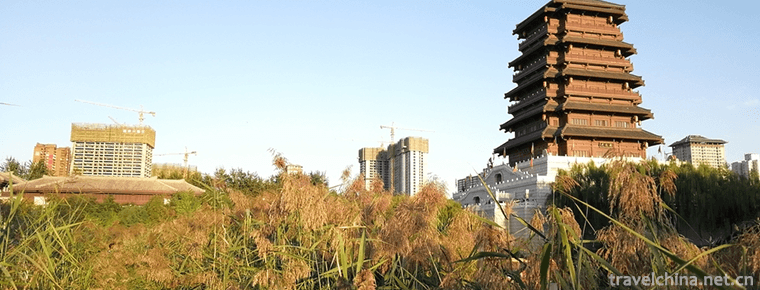
-
Mount Song
Songshan, known as the "foreign side" in ancient times, Xia and Shang Dynasties as "lofty" and "Chongshan", Western Zhou Dynasty as "Yue Shan", Songshan as the .
Views: 186 Time 2018-10-30 -
Thousand Islet Lake Qiandaohu Scenic Area
Qiandaohu Scenic Area, also known as Xin'anjiang Reservoir, is located in Chun'an County, Hangzhou City, Zhejiang Province..
Views: 190 Time 2018-12-07 -
Bosten Lake Scenic Area
Bosten Lake Scenic Spot is a national 5A scenic spot, covering an area of 988 square kilometers, is located in Xinjiang, China's scenic spots, Bosten Lake was known as the West Sea in ancient times,.
Views: 218 Time 2018-12-12 -
Guangxi Science and Technology Museum
Guangxi Science and Technology Museum is located in Nanning National Avenue. It was established in March 2006 and started construction in December. It covers an area of 14655 square meters.
Views: 352 Time 2019-01-13 -
Seoul Lake Park
Seoul Lake Park is located in Weiyang District of Xi'an City, Shaanxi Province. It is 200 meters west of the cross of Fengcheng 4th Road and Zhuhong Road. It was originally the Unity Reservoir .
Views: 124 Time 2019-01-13 -
kangbaiwan manor
Kang Million Manor, also known as Heluo Kangjia, is located in Kangdian Town, Gongyi City, Henan Province (formerly Gongxian County). It was built in the late Ming and early Qing Dynasties.
Views: 192 Time 2019-01-29 -
Ancient Town of Yi Nationality
The ancient town of Yi people is located in the north of Yongan Avenue, the west of Sun Li Park, the east of Longchuan River and the south of Chuda Expressway in Chuxiong Economic and Technological De.
Views: 204 Time 2019-03-04 -
Eight Immortals
Raw materials: japonica rice, yellow millet, soybean, red adzuki bean, mung bean (fried with five flavors) 75 grams each. Fennel (washed) 150 grams, dried ginger, stir-fried white salt 30 grams each. .
Views: 144 Time 2019-03-27 -
Yi sea
The Yi sea is also known as the fish sea, and the local Yi people are called Su pin. It is located in Yangping mountain, Yihai Town, 40 km north of Mianning County. It is 330 km away from Chengdu, the capital of Sichuan Province.
Views: 123 Time 2020-10-15 -
Population and nationality of Suining
At the end of 2019, the total number of household registration in Suining was 1 million 380 thousand, and the household registration population was 3 million 629 thousand, a decrease of 0.7% over the previous year, of which 1 million 4 thousand and 900.
Views: 126 Time 2020-12-16 -
Neijiang science and technology
In 2019, Neijiang City completed 195 science and technology projects above the municipal level, and applied for 2509 patents and obtained 1425 authorized patents, including 456 invention patents and 90 authorized invention patents. At the end of the year, there .
Views: 121 Time 2020-12-16

